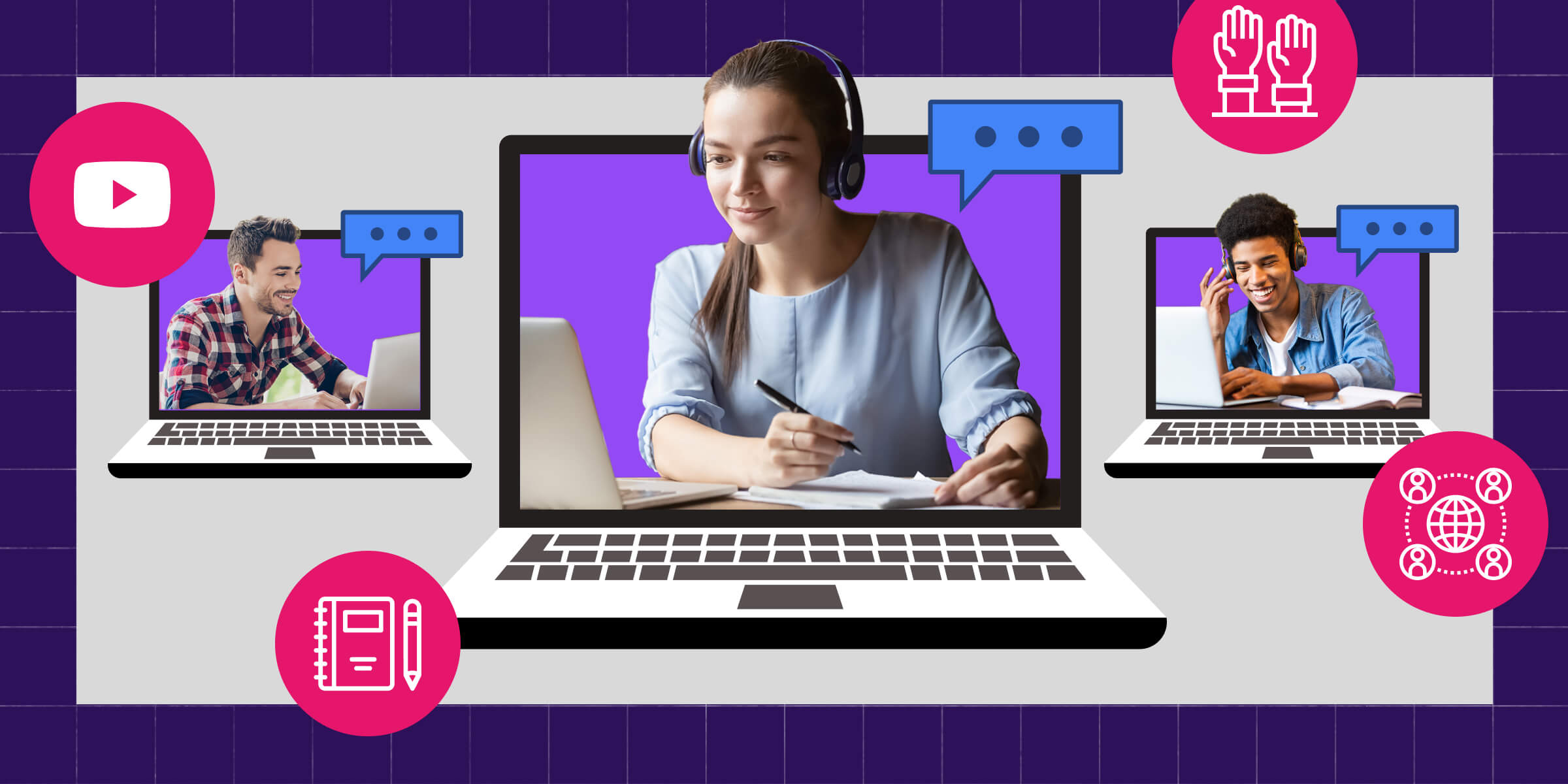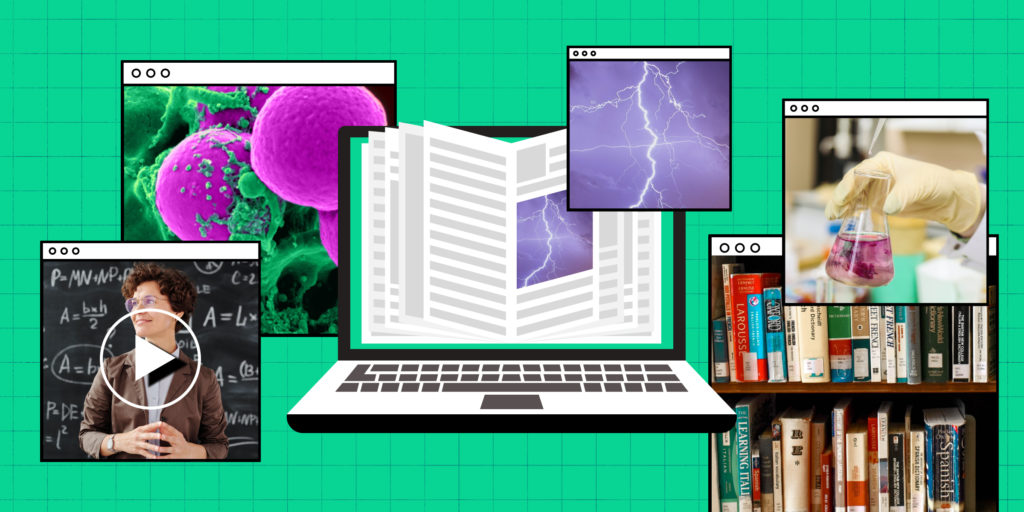How does education technology impact student learning? In the physical classroom, some postsecondary educators view technology as a distraction. Even if they don’t ban the use of mobile phones or social media during lectures, they may begrudgingly view technology as a little more than a necessary evil.
But after a year of remote learning during the COVID-19 pandemic, perspectives are changing. Rather than simply ‘tolerate’ it, instructors are realizing that technology and the power of digital devices, apps and tools can increase engagement, encourage collaboration, spark innovation and enhance student learning.
In and of itself, education technology doesn’t result in effective teaching and learning. It still requires a guide (the educator) and a purpose (related to the curriculum). And there is effort and strategy required to integrate it effectively into your course material. But, if used with intention, education technology can be transformed from a distraction to an effective teaching tool with positive effects on student achievement.
Here are a few answers to the question of how education technology has changed today’s colleges and universities , and reasons why educators should make the most of technology inside—and outside—the classroom.
Technology affords better access to resources
With an Internet connection, we have access to information at our fingertips 24 hours a day. We can find almost anything online, in its most up-to-date version. For students, this means access to everything from research materials and educational apps to interactive edutainment and open resources from prestigious universities around the world. (Students may, however, need instruction on how to find credible resources and direction on providing proper attribution when they use them.)
Students can also supplement their learning by connecting with online groups and virtual communities in real-time, or by collaborating on group projects using tools such as wikis and cloud-based apps. And instructors can provide access to the course material (and additional resources) by setting up portals through learning management systems or providing access to course-specific software for each learner. For budget-conscious educators, open educational resources may provide useful course materials their students can access throughout a course.
What are open educational resources?
Open educational resources (OER) are teaching, research and learning resources that explicitly allow others to use, keep and distribute them. OER are teaching resources that have an open copyright license (such as Creative Commons), or they are part of the public domain and have no copyright. Depending on the license, OER can be freely accessed, used, re-mixed, improved, and shared. OER is one way of engaging students more deeply in the learning process, moving beyond lectures and static textbook chapters. By blending technology and education, open educational resources also give instructors the tools to involve students in the creation of learning materials.
Technology can improve student engagement
Education technology can help students by making learning more engaging and collaborative. Rather than memorizing facts, students learn by doing and through critical thinking. This could be as simple as taking an interactive quiz in class or participating in tech-enabled group discussions. Or it could be as involved as playing educational games, practicing in science experiments in a virtual lab or taking a virtual field trip.
To make learning truly engaging, it must be truly interactive. Doing math on a computer isn’t any different than doing math with a pencil and pad of paper. But using augmented reality to animate math challenges is a whole different ball game. Ultimately, interactivity and technology enhance learning.
For educators, the role of education technology is endless: from using simulation tools to demonstrate how a hurricane develops, to using virtual reality to practice medical procedures. “As a growing number of medical schools bring virtual reality into the classroom, students are finding it an effective way to learn complex subject matter, such as anatomy, that’s often easier to understand with hands-on practice,” writes Chris Hayhurst for EdTech Magazine. Blended learning is a great way to ensure you’re using technology to engage your students both in and out of your class.
What is blended learning?
Blended learning is an educational approach in which students learn online as well as through traditional face-to-face teaching. Sometimes referred to as hybrid learning, blended learning is a combination of traditional in-classroom and online education with multimedia components, such as interactive discussions and polls, embedded videos and live chats. Individually, both have their advantages. Together, blended learning can offer a more engaging learning experience for students by providing them with opportunities to work both independently and with their peers and instructor to reinforce learning and achieve subject mastery with education technology
Blended learning is more than just using technology to supplement the classroom experience. Rather, blended learning requires that a significant portion of course material is delivered through online instruction using digital technology, combined with some face-to-face components. For example, students may complete lectures and homework assignments online but have in-person lab meetings. This way, students complete certain parts of the course according to their own schedule and can revisit the material as needed. The rest of student time is then spent in a classroom, lecture hall or lab, with supervised instruction.
Education technology can expand classroom boundaries
Thanks to education technology, the classroom no longer has walls. The learning environment no longer has boundaries. And instruction can be provided by any number of subject matter experts in the real world—in addition to the person teaching the course through the use of technology.
“Students in a classroom in the rural U.S., for example, can learn about the Arctic by following the expedition of a team of scientists in the region, read scientists’ blog postings, view photos, e-mail questions to the scientists, and even talk live with the scientists via a videoconference. Students can share what they are learning with students in other classrooms in other states who are tracking the same expedition,” according to an article on technology in education by Purdue University. Ultimately, technology allows students to expand their horizons by extending learning beyond textbooks and lectures and connecting it to the real world.
Technology can encourage self-paced learning
In a traditional classroom, students who were struggling to learn new concepts would quickly fall behind their peers. With self-paced learning components, however, students can advance at their own pace as part of the learning process. Those who need more time or extra help can practice outside of class with guided exercises or additional coursework. So, too, can learners who want more of a challenge.
Thanks to the always-on nature of technology, students can access online learning resources whenever they need to. These resources also have the ability to provide instructors with a sense of which students might need extra help.
The exercise of self-paced learning with these new technologies allows students to learn digital literacy and 21st-century skills, which will have a positive impact when they enter the workforce. One such way to accomplish this goal is 1:1 computing, which provides students with the technology they need to engage in coursework.
What is 1:1 computing?
One-to-one computing (often abbreviated as “1:1”) is an educational practice where academic institutions provide every student with a laptop or tablet, allowing students to access the Internet, as well as preloaded course materials and textbooks. One-to-one computing uses the impact of technology to create an equitable classroom environment in which students have easy and equal access to information. It also boosts career readiness, since the skills 1:1 computing imparts are increasingly expected both on campus and in the office.
Technology can promote innovative teaching techniques
Education technology changes the way we access information, and also how we’re taught that information. The instructor becomes less of a ‘sage on a stage’ and more of a ‘guide on the side.’ From accessing real-world case studies online to watching video-recorded lectures to listening to podcasts, technology opens up the possibility for teaching innovation (including collaborative group work and flipped and hybrid classrooms). Instructors can also use classroom response systems to assess students’ understanding of course material, adjust the paces needed in real-time and build on students’ problem-solving skills. Moreover, digital materials can enhance the learning experience by making it more flexible, more engaging and better able to accommodate student needs.
How are digital materials used in the classroom?
Digital materials in the higher education classroom provoke student curiosity. These interactive textbooks or readings can also boost student engagement and lead to better learning and comprehension by offering multimedia components, discussion threads and embedded assessments. In order to foster deeper and more collaborative learning, many educators use education technology to share their digital materials through chat forums, discussion threads and comprehension-testing questions to assess student learning. There are also a number of online learning materials, tools and platforms that educators can use to conduct tests, quizzes and exams.
How does education technology impact student learning? A summary
While education technology is sometimes seen as a threat—and it does have its limits—integrating it into your teaching practice offers a new way for students to interact and engage with course material. And this is especially essential after students have become used to learning with technology during the COVID-19 pandemic. Thanks to education technology tools, education is no longer confined to the walls of your classroom. YouTube videos and social media don’t have to be a distraction; they can be part of your lesson plans. The math is easy: it adds up to better learning outcomes.
References
- Hayhurst, C. (2017, February 15). Medical Students Practice Critical Skills on Digital Cadavers. Retrieved from https://edtechmagazine.com/higher/article/2017/02/medical-students-practice-critical-skills-digital-cadavers
- How Has Technology Changed Education? (2017, April 25). Retrieved from https://online.purdue.edu/ldt/learning-design-technology/resources/how-has-technology-changed-education


